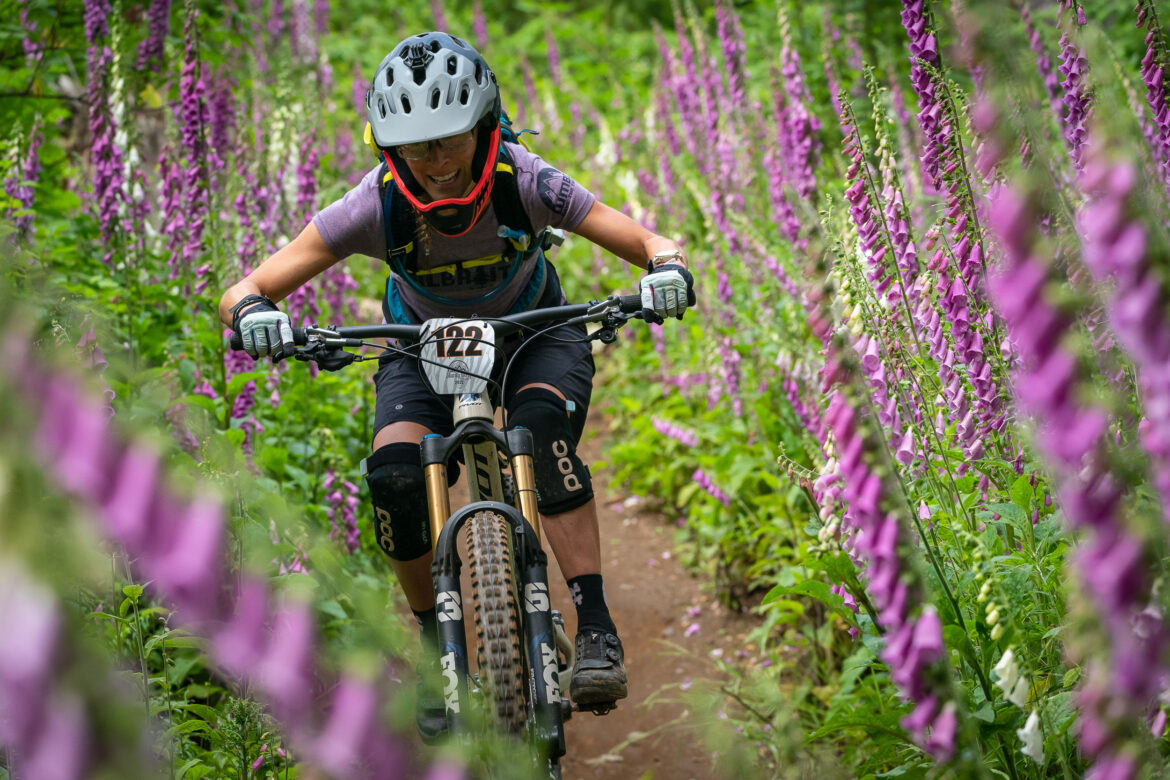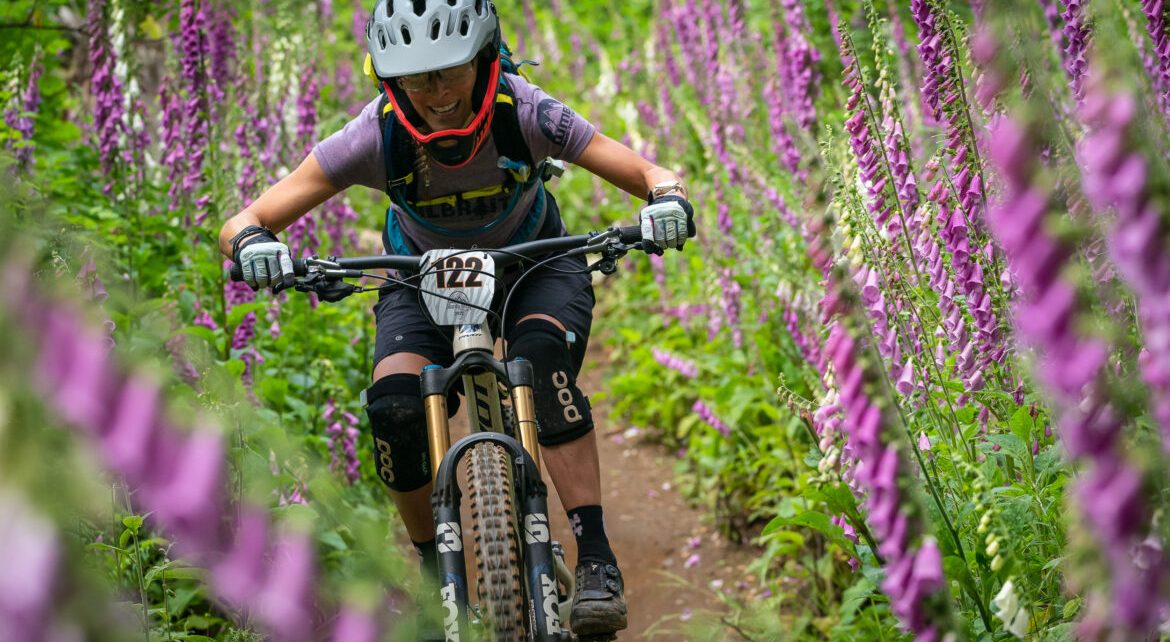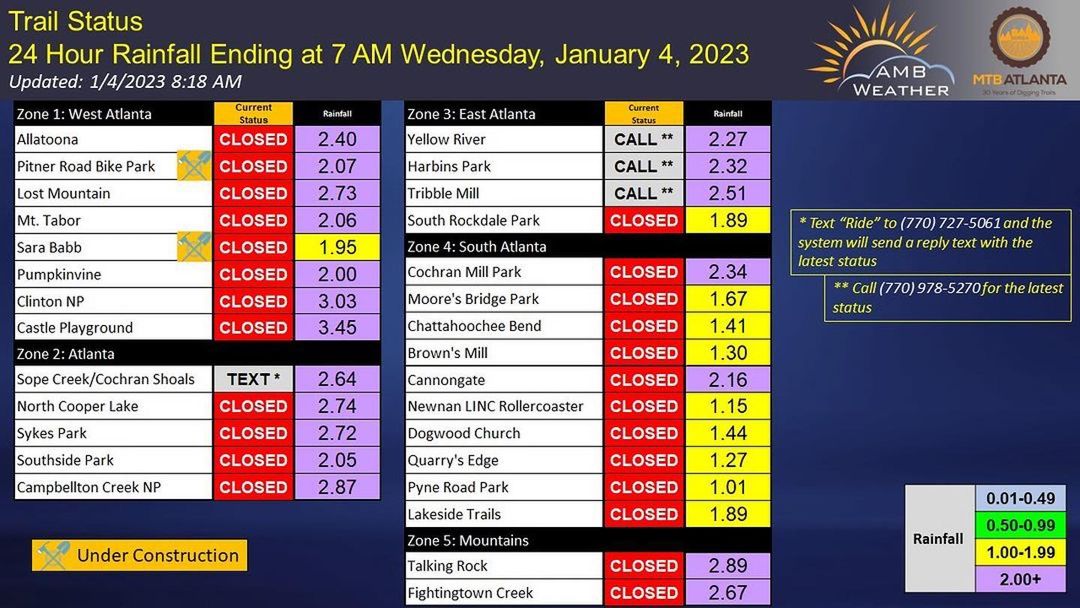
It’s hard to say which came first: Kristin Clark’s interest in the weather or mountain biking. Born to a pair of meteorologists and growing up around the woods of Pennsylvania, Clark was immersed in both from a very early age.
“A lot of people have a certain weather event as a kid that triggers an interest in weather, whether it be a hurricane, tornado, or great flood,” she said. “My interest was a little bit different in the fact that both of my parents are meteorologists.” Clark went on to graduate with a Bachelor of Science Degree in Meteorology from Pennsylvania State University,
As for mountain biking, Clark started riding an old-school Giant bike in the woods near her home as a kid, and never really stopped. Over the years she’s worked as a meteorologist in Colorado Springs, Minneapolis, and Seattle where she’s currently on air with ABC affiliate television station, KOMO 4.
At the intersection of mountain biking and weather, Clark also enjoys studying and geeking out over maps, and has an Instagram account called @2wheelweather.
Plenty of mountain bikers style themselves armchair meteorologists, which is not surprising given how the weather impacts our rides, from trail conditions and closures to deciding what to pack and wear during the ride. An actual meteorologist, Clark has a a professional understanding of weather that mountain bikers can use to ensure safe, fun rides.
Will I be able to ride tomorrow?
It’s the night before a big ride, and the weather forecast says there’s a 30% chance of rain. What does that mean, and how does it affect our plans?
Clark says broadcast meteorologists define the percentage chance of rain as the chance that it’s going to rain at any single point in the viewing area. “I try to use other things to describe the chance of rain instead of saying 30% chance,” she said. Instead, Clark might communicate that “there could be some hit or miss showers, but at times we’ll have some breaks as well. And that kind of gives a person like a visual understanding of what the weather will do.”
Even the Pacific Northwest, generally known for its fairly consistent cloudy and wet weather, is pocked with microclimates with varying weather conditions. It could be sunny in downtown Seattle but cloudy in the foothills of the Cascades east of the city. The percentage chance of rain simply can’t communicate how conditions will vary throughout an area, or even throughout the day.
Today’s forecasts are much better than those in the past thanks to powerful computers and algorithms that take into account evermore data sources, according to Clark. Twenty-four to 48-hour forecasts are generally quite accurate, which means they’re reliable enough for ride planning. Seven-day forecasts give riders a pretty good, general idea of what is coming next, though you might not want to preemptively cancel plans for your Saturday ride on Monday based on the forecast. Looking beyond seven days Clark says the details get a little fuzzy, making them mostly useless for ride planning.
Asked if a rainy forecast would cause Clark to cancel or postpone a ride, she responded with a popular adage: “It’s not about bad weather. It’s just bad equipment.”
What should I wear and/or pack?
Naturally it makes sense to pack a rain jacket if there’s a good chance of rain during the ride, or to wear one when it’s already raining. And if the hourly forecast shows a temperature swing during the ride, it’s a good idea to pack extra layers for the coldest parts. However, temperature isn’t the only gauge mountain bikers should check when dressing for a ride.
Wind chill is a factor most of us are familiar with during colder months, with wind making cold temperatures feel even colder. Apparel with wind-blocking materials is an obvious choice if wind is in the forecast, and a neck gaiter does a good job preventing wind from going down your shirt.
In places where humidity is common, Clark says the key metric to consider is the dew point. “The higher the dew point, the more moisture there is in the air… and the more uncomfortable the air will feel while mountain biking. As a general rule, when the dew point climbs above 60° the air tends to feel ‘sticky’ and uncomfortable.” So, focus on the dew point rather than relative humidity when planning summer rides.
Beyond dictating our comfort out on the trail, weather can have more serious consequences as well. “You don’t want to be out in dangerous weather, regardless. You want to be smart about it.”
And then there are times we can’t ride trails even if we want to, due to weather-related trail closures.
Weather-related trail closures
The weather plays a role in whether mountain bikers can ride a trail or not. In many areas, trails can be closed because of wet or snowy conditions, or in more extreme cases, due to downed trees or unsafe conditions caused by hurricanes and wildfires.
For areas where wet trails are a regular concern, the amount of rain in the forecast is a potentially helpful data point. MTB Atlanta, for example, posts regular trail status updates which include the amount of rainfall at a particular trailhead over the past 24 hours, giving riders a feel for the relationship between how much it rains, and how wet the trails get. So if on Monday the forecast says it’s going to rain a couple inches on Tuesday, it’s a safe bet that the trails will be closed on Wednesday.
Weather affects us all
Talking with Clark, it’s clear that the weather has a massive affect on everyone, and not just mountain bikers planning their weekend ride. To put things into perspective, extreme weather can be devastating, potentially causing loss of life and/or property, that go far beyond mere inconvenience. As a meteorologist, Clark doesn’t take her responsibility lightly, and while she doesn’t create the weather, she doesn’t relish delivering bad news either.
“We had a crazy ice storm the Friday before Christmas, and it messed up a lot of people’s Christmas plans. But I had to remind myself, I can’t control the weather.”




